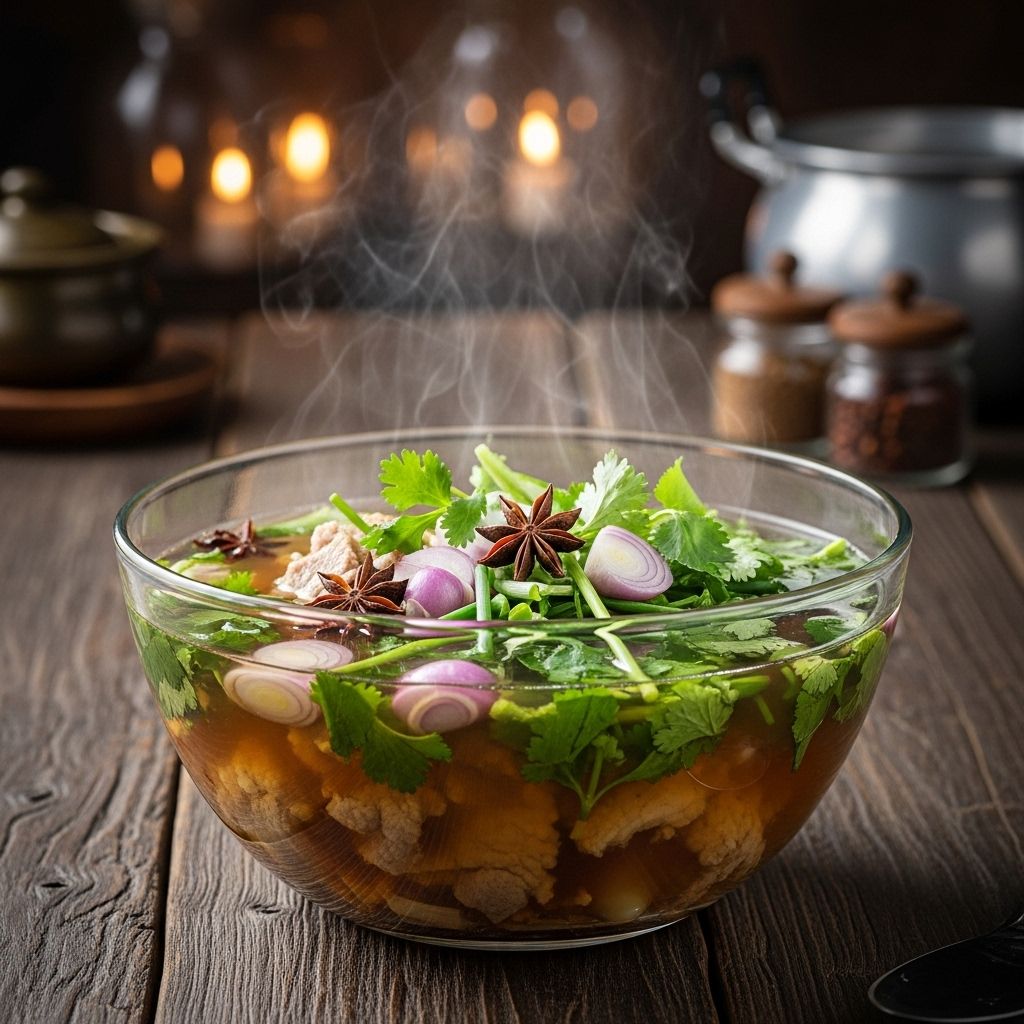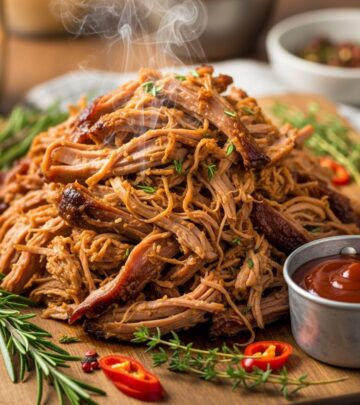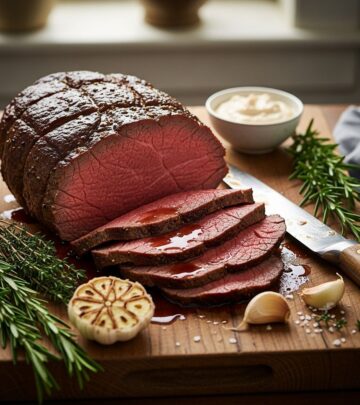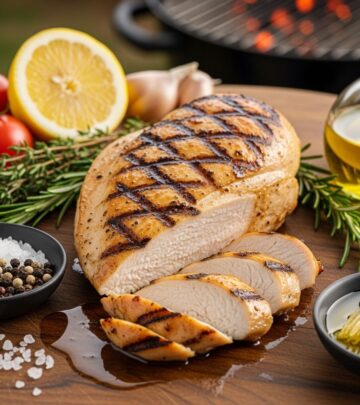Mastering Thai Pork Stock: Foundation of Authentic Thai Soups
Use precise techniques to coax pure, nuanced flavors that become the heart of every soup.

Thai cuisine is famous for its complex flavors, aromatic herbs, and soul-soothing soups. At the heart of many beloved dishes—from comforting noodle soups to spicy broths—lies the foundation of them all: Thai pork stock. While chicken and beef stocks find their place in global kitchens, pork stock is the backbone in many regions of Thailand, imbuing soups with depth, subtle sweetness, and a delicate richness that’s difficult to replicate.
This comprehensive guide will walk you through every aspect of crafting a flavorful, clear, and aromatic Thai pork stock, explaining ingredient selection, techniques for clarity, usage, and expert tips to elevate your home cooking. Let’s dive into the art, tradition, and science behind this essential component of Thai cuisine.
Why Pork Stock Is Central to Thai Cooking
Unlike the dominance of chicken or beef stock in Western cuisine, Thai cooks—particularly in Central and Southern Thailand—often turn to pork as the base for their everyday broths. Pork stock offers several advantages:
- Flavor Profile: Pork imparts mild umami, a slight natural sweetness, and a clean richness without overpowering herbiness or excessive fat.
- Versatility: Its subtle taste forms a blank canvas for spicy, sour, or herbal additions found in classic soups and noodles.
- Cultural Roots: The use of pork stock reflects centuries of culinary exchange, drawing influences from Chinese broths but adapting to local Thai ingredients and palate.
From street-side noodle stalls to home kitchens, pork stock is the unsung hero in:
- Kuy Teav (clear noodle soups)
- Tom Yum (spicy-sour soups, sometimes with pork base)
- Braise dishes, curries, and more
Understanding the Building Blocks: Ingredients and Their Roles
The ingredients in Thai pork stock are simple but strategic. Each one enhances body, clarity, or fragrance:
- Pork Bones: The foundation—neck, leg, and knuckle bones provide plenty of collagen and flavor; some cooks add pork ribs or a small quantity of meat for more richness.
- Aromatics: Garlic, cilantro stems, and white peppercorns lend a gentle, herbaceous nose distinct to Thai cuisine.
- Onion: Contributes natural sweetness and a rounded, mellow flavor.
- Sugar: Typically rock sugar or palm sugar—a touch of sweetness is crucial for balance and depth.
- Salt: Sea salt or kosher salt, added judiciously to allow the stock to be seasoned further in the finished dish.
- Water: Fresh, cold water is key for extracting flavor slowly and achieving a clear result.
| Ingredient | Purpose |
|---|---|
| Pork Bones | Flavor, body, richness |
| Cilantro Stems | Fresh, herbal aroma |
| Garlic | Subtle earthy taste, complexity |
| White Peppercorns | Peppery heat, fragrance |
| Onion | Sweetness, background flavor |
| Rock Sugar | Mellow sweetness, umami enhancement |
| Salt | Seasoning, flavor balance |
Essential Equipment for Success
- Large Stockpot: At least 8 quarts for sufficient volume and easy simmering.
- Fine-Mesh Skimmer or Ladle: For removing foam and scum that develop as the stock simmers.
- Fine Sieve or Cheesecloth: Straining ensures a clear, pure broth.
Traditional Thai Pork Stock Recipe
The following method is time-tested and produces a light, aromatic, and deeply satisfying pork stock suitable for a variety of dishes.
Ingredients
- 3 pounds (about 1.4 kg) pork neck bones, leg bones, or a mix with some pork ribs
- 4 quarts (3.8 liters) cold water
- 3 to 5 large cilantro stems (with roots if possible), cleaned
- 4 large cloves garlic, gently crushed
- 1 small onion, peeled and quartered
- 10 whole white peppercorns
- 1 tablespoon (about 15 g) rock sugar or palm sugar
- 2 teaspoons (about 10 g) kosher salt (adjust to taste)
Method
- Blanch the Bones: Place pork bones in a large stockpot. Cover with cold water, bring to a boil, and cook 5 minutes. Drain bones and rinse away scum under running water. Clean the pot.
- Simmer the Stock: Return blanched bones to the pot with 4 quarts of fresh cold water. Add cilantro stems, garlic, onion, and peppercorns. Bring to a gentle simmer over medium flame—never let it boil vigorously.
- Skim Frequently: During the first 30 minutes, regularly remove any foam or impurities rising to the surface to promote clarity.
- Add Seasoning: After 1 hour, stir in rock sugar and salt. Taste and adjust seasoning if needed, but avoid over-salting; you can always enhance flavor later in the finished dish.
- Continue to Simmer: Maintain a low simmer for about 2–3 hours total, uncovered. Do not boil.
- Strain and Store: Remove large solids with tongs. Pour stock through a fine-mesh sieve or cheesecloth into a heatproof container. Discard solids. Let cool, skim off excess fat if desired (a thin layer adds flavor), and refrigerate or freeze for later use.
Expert Tips for the Best Thai Pork Stock
- Start Cold, Simmer Low: Producing a clear, clean-tasting stock requires starting with cold water and never boiling hard, which can emulsify the fat and cloud the broth.
- Choose the Right Bones: Add a mix of meaty and collagen-rich bones (such as knuckles or shank) for balanced flavor and silkiness.
- Don’t Overpower with Herbs: Thai stock is subtle; aromatics should support, not dominate, the pork/cilantro/pepper combo.
- Double Strain: For extra clarity, strain through both a sieve and cheesecloth.
- Freeze in Portions: Store in freezer-safe containers or ice cube trays for quicker defrosting and recipe flexibility.
Common Variations and Regional Approaches
While the above method is a central Thai approach, home cooks and vendors experiment based on region and occasion:
- Some add dried squid or dried shrimp for a faintly briny depth (typical in noodle shops).
- Roots from cilantro are prized for their aromatic punch; use if available.
- Clear vegetable scraps—like carrot, daikon, or celery—can appear in certain provinces.
- For heartier soups, a small piece of pork shoulder may be simmered alongside bones, then shredded for the finished dish.
How to Use Thai Pork Stock
This versatile, lightly seasoned broth is a blank canvas for countless dishes:
- As a base for kuy teav or other Thai-style noodle soups, topped with sliced pork, greens, and fried garlic.
- In joke (Thai rice porridge/congee)—it boosts richness and aroma.
- As a gentle simmering liquid for meatballs, fish balls, or dumplings.
- As the foundation for tom yum or tom kha when you desire a slightly richer undertone.
- Added to stir-fries and sauces to heighten umami.
Storage and Shelf Life
- Refrigerate the strained stock in a sealed container for up to 4–5 days.
- Freeze in small containers or ice cube trays (for easy portioning) for up to 3 months.
- A layer of fat will rise and solidify when cold—this helps preserve flavor and can be removed or incorporated as desired.
Thai Pork Stock vs. Western Broths: Key Differences
| Aspect | Thai Pork Stock | Western Pork or Chicken Stock |
|---|---|---|
| Aromatics | Cilantro roots/stems, garlic, white pepper | Bouquet garni, carrots, celery, bay leaf |
| Seasoning | Slight salt, touch of sugar | Often left unseasoned |
| Usage | Noodle soups, porridge, curries | Base for sauces, soups, gravies |
| Clarity | Highly prized, much skimming | Clarity valued but not always critical |
Frequently Asked Questions (FAQs)
Q: Can I use a pressure cooker to make Thai pork stock?
Yes, a pressure cooker can greatly speed up the process (about 45 minutes at high pressure). However, stocks made this way can sometimes lack the clarity and delicate flavors that a slow simmer yields. To maximize flavor, briefly simmer uncovered after pressure-cooking to coax out any surface fat and clarify.
Q: What if I can’t find cilantro roots?
Cilantro roots impart a special fragrance, but if unavailable, simply use extra cilantro stems. The stock will still be robust and aromatic.
Q: Can this stock be made in advance?
Absolutely. Thai pork stock stores well in both the refrigerator (up to 5 days) and freezer (up to 3 months). Portion into airtight containers for easy meal prep.
Q: How can I use leftover bones from roast pork?
Leftover roasted pork bones will add a deeper, slightly smoky flavor to your stock—a delightful twist for certain noodle soups or rice dishes.
Q: My stock looks cloudy. What went wrong?
The most common reasons are a rolling boil (instead of slow simmering), insufficient skimming, or not blanching the bones first. Take time at each step for the clearest results.
Conclusion: The Foundation of Thai Comfort
Mastering traditional Thai pork stock opens a world of comforting soups, aromatic porridge, and endless other dishes. Each batch creates a flavorful, adaptable foundation that resonates with the history and warmth of Thailand’s home cooking. With expert techniques and attention to detail, this humble broth will elevate every noodle bowl and family meal.
Start simmering, and bring the soul of Thai cuisine into your home, one pot at a time.
References
Read full bio of Sneha Tete












